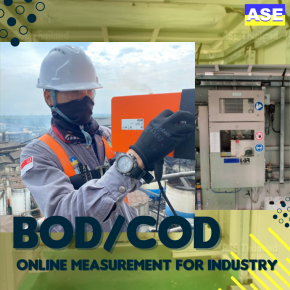Is now a good time to start getting familiar with CEMs?
CEMs; these three or four mixed case letters may look easy to comprehend, but they are actually quite complex and highly specialized.
Because the law from the Department of Industrial Works which we’ve mentioned in our previous article has already begun to take effect, many people have recently been forced into "knowing" and "understanding" even if they did not want to.
The consequences for the owners' negligence or refusal to comply with these standards are severe enough that the plant could be ordered to stop production immediately or even shut down permanently.
"I know that CEMs are required to be installed."
"I know that the results must be made available online on schedule."
"I know that ignoring this is against the law."
If the three sentences above are all you know about CEMs, then I recommend that you continue reading the article. We are going to acquire a little bit of additional information about this today.
Continuous Emission Monitoring Systems, often known as CEMs, are a type of system that monitors the quality of the air by combining a number of different devices.
To make it simple, the system is designed to keep tabs on the air quality by using a variety of sensors.
The operation of certain kinds of factories results in the emission of waste gas from the chimney. This waste gas is composed of gases that result from the combustion process, including oxides of nitrogen, carbon dioxide, oxygen, water vapor, and other gases that are considered to be hazardous gases, including sulfur dioxide, hydrogen chloride, mercury, hydrogen sulfide, hydrofluoric acid, and so on. These gases' relative concentrations, expressed in parts per million, will be measured using the device. We are able to make accurate forecasts regarding both the quality of the air and the extent to which it poses a threat to the surrounding ecosystem by measuring the quantity of these gases. In addition to this, it is also possible to utilize it to evaluate the safety of different types of working settings.
CEMs can be separated into two major categories: extractive systems and in-situ systems. One type will collect samples for analysis at the location where the system is installed, while the other type will analyze at the stack or emission source. Each has advantages and disadvantages, as well as applicability for particular situations.
“The law requires factories that are using Furnaces, Boilers, Steam Turbine Generators, and Engine Exhausts as part of their production, including power plants, refineries, petrochemical facilities, and industries that are required by the *EIA to regularly report air quality measurements. CEMs must be installed to transmit varied gas concentrations to the Department of Factory's central reporting system 24 hours a day, seven days a week.”
As can be seen, CEMs will be operating practically non stop throughout the day. It is necessary that a high level of steadiness be maintained. It is possible that the levels of pollution will be incorrectly interpreted if the device, any component of the system, or any gas detection fails to function properly. This presents a risk. The owners are responsible for monitoring the machine's functionality and providing routine maintenance in order to prevent future failure.
I'll walk you through 'the main components of the CEMs system' in the next article. I am confident that some of the information you find here will help you avoid being tricked by an unprofessional. There are cases where more equipment is installed than is necessary. Let me tell you that the cost of installing all of the necessary equipment alone is quite high; you don't need any unnecessary installation or any unnecessary cost.
Remark *EIA stands for Environmental Impact Assessment, and it is used to forecast both positive and negative impacts from the development of important projects or activities in order to determine measures to prevent and correct environmental impacts, as well as to use in decision-making to develop or discontinue such projects or activities.



